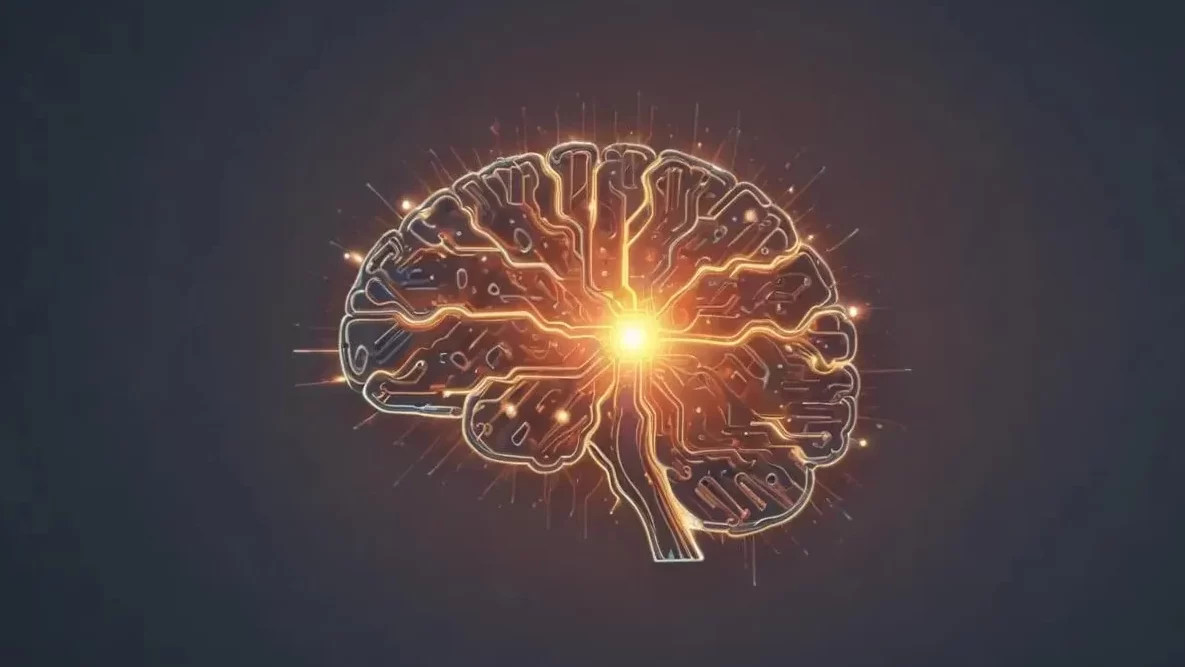
- Neuroplasticity: The Remarkable Capacity of the Brain to Rewire itself
- The Effect of Meditation in Brain Rewiring
- The Effects of Visualization on Neuroplasticity
- Useful Advice on Utilising Neuroplasticity
- Science of Healing and Meditation
- Typical Doubts
- Real-Life Clients of Joe Dispenza
- The Course of Self-healing
Have you ever wondered if you could literally change your ideas and thereby your life? Imagine waking up one day and choosing to rewrite the patterns that have held you down in your life, therefore generating an inside-out new reality. Although this seems unreal, Dr. Joe Dispenza claims that the power of neuroplasticity allows us to grasp this reality.
Neuroplasticity: The Remarkable Capacity of the Brain to Rewire itself
The methods of Dr. Joe Dispenza depend on neuroplasticity—that amazing ability of the brain to reorganize itself.
Neuroplasticity is the capacity of the brain to reorganize itself by means of new neural connections across lifetime. Think of your brain as a dynamic, flexible map with highways that can be rerouted and new ones created, therefore enabling you to alter ingrained habits, ideas, and actions.
One basic quality of the brain that has been much studied is neuroplasticity. For instance, experiences, education, and even concepts all affect the brain’s capacity for adaptation and development, according to a foundational study written in Nature Reviews Neuroscience. The study challenges the conventional wisdom that holds the brain’s structure fixed at a specific age by stressing that neuroplasticity is a constant process occurring throughout our life.
Many contemporary therapeutic approaches, including cognitive-behavioral therapy (CBT), which seeks to help individuals overcome negative thought patterns, center this capacity for restructurement. Expanding on this concept, Dr. Dispenza’s research shows that we can employ neuroplasticity—that is, meditation, visualization, and intentional thinking—to create fresh brain connections matching our ideal reality.
The Effect of Meditation in Brain Rewiring
Dr. Dispenza’s lectures stress meditation as a method for rewiring the brain. Still, what changes the brain when we mediate? Particularly with an eye toward intention and awareness, meditation actually educates our brain to create new neural paths, not only helps us to relax the mind. This practice helps us to release the “hard-wiring” of our past experiences and open path for fresh ideas, emotions, and actions capable of changing our life.
Regular meditation practice is linked, according to Harvard Medical School researchers, to increased gray matter density in the hippocampal region of the brain engaged in learning and memory as well as a decrease in the size of the amygdala, which is linked with fear and stress reactions.
Additional studies have shown that meditation can affect the default mode network (DMN), which is active in the brain when the mind is at rest and not focused on the outside world. Often connected with self-referential ideas, such as worries about the past or the future, the DMN shows less activity in experienced meditators, according to a study published in the Proceedings of the National Academy of Sciences. This suggests that meditation helps lower the tendency for mind-wandering and self-referential thoughts, thereby increasing present-moment awareness and reducing anxiety.
The Effects of Visualization on Neuroplasticity
Additionally included in Dr. Dispenza’s method is visualization—that is, the process of clearly seeing particular outcomes. One very effective method for modulating the neuronal pathways in the brain is visualizing. Thus, by always seeing a desired outcome, you can start to create new neural connections that line up with that vision, so “training” your brain to see and behave in ways that bring your desires almost to pass.
According to a study written up in the Journal of Neurophysiology, mental practice through visualization can produce changes in the motor cortex of the brain that resemble those observed after physical exercise. The study indicated that participants who imagined themselves doing a task had same cerebral activity patterns as those who really performed the task, suggesting that the brain cannot always tell real from imagined events. This result highlights the need of visualization in enhancing performance, knowledge, even physical recovery.
Moreover, research in sports psychology have revealed that athletes who apply visualizing strategies may improve their performance by mentally practicing their actions before they are executed. This exercise helps to strengthen and enhance the brain circuits connected with the desired behavior, therefore facilitating real-life application.
Useful Advice on Utilising Neuroplasticity
How then might you start to remodel your brain right now? These useful techniques will enable you to maximize the potential of neuroplasticity:
- Start every day with a 10-minute meditation directed toward a particular goal. Whether your goals are to be more patient, lower tension, or embrace optimism, concentrate on this one while you inhale deeply to help it to settle into your consciousness. Consistency is crucial; start this daily practice to start seeing changes in your habits and mental pattern.
- Spend some time each evening considering three items for which you are especially thankful. This easy exercise reinforces fresh, better neural connections by helping your brain focus away from destructive habits and toward healthy ones. Research shows that thanksfulness can boost well-being and reduce depression symptoms, thus acting gratefully is a useful mental health tool.
- Spend some time each day thoroughly imagining your future self—that which you wish to be. See this vision using all of your senses to make it as realistic as you can. This approach not only increases drive but also allows the brain to build fresh neural paths in line with perception. Positive emotions like happiness, excitement, or thanks can help to strengthen fresh brain connections and hence improve visualization.
- When you catch yourself thinking negatively, challenge such ideas by asking yourself whether they are accurate or if another perspective of the situation exists. Based on neuroplasticity theories, cognitive-behavioral therapy (CBT) techniques can help individuals recognize and modify bad thought patterns. While developing new positive attitudes, challenging and reinterpreting bad attitudes disrupts brain connections related with them.
- Learning a new language, picking up an instrument, or engaging in a hobby all thrill the brain and promote neuroplasticity. Studies suggest that acquiring new skills could boost cognitive function and raise gray matter density in the brain. Constant exercising your brain with fresh knowledge and experiences helps you to keep its adaptability and flexibility.
Science of Healing and Meditation
The theory that ideas could affect our physical reality is not only philosophical or spiritual but also scientifically backed. Studies on meditation have revealed measurable brain alterations, mostly in areas related to emotional control, memory, and learning.
Participants in an 8-week mindfulness meditation program showed changes in brain areas linked with learning, memory processing, and emotional control, according to a study written up in the Journal of Neuroscience. This research strongly supports the theory that meditation can influence brain structure in such ways as to boost psychological and emotional well-being.
Long-term meditation’s effects on brain form and function were examined in another Frontiers in Human Neuroscience paper. Long-term meditators, the researchers found, had reduced age-related gray matter loss and raised cortical thickness in brain areas linked with attention and sensory processing. These results suggest that meditation not only enhances brain performance but also might prevent cognitive decline as we become older.
Typical Doubts
“Can meditation really change my brain?” is probably a question on your mind. or “Is all of this just wishful thinking?” Doubts are normal, particularly when something seems too wonderful to be true. But the increasing amount of research demonstrating the benefits of meditation and neuroplasticity speaks volumes. It’s not about quick fixes; rather, it’s about deliberate, regular exercise that progressively changes your brain and, consequently, your life.
Apart from the mentioned studies, a meta-analysis written in JAMA Internal Medicine looked at 47 clinical trials with 3,515 people and found that mindfulness meditation programs help lower pain, anxiety, and sadness. These results support the neuroplasticity ideas Dr. Dispenza advocates by showing how meditation can help with mental and emotional rehabilitation.
Real-Life Clients of Joe Dispenza
After reading Dr. Dispenza’s book, 34-year-old anxious Sarah decided to try meditation. Though first reluctant, she promised to daily meditate in order to change her thought habits and produce inner peace. Over time she saw a significant drop in her anxiety and improved stress management techniques.
John, a 50-year-old guy with ongoing back discomfort, offers still another striking example. John’s pain level dropped dramatically as he started using Dr. Dispenza’s techniques and reading his books into daily life. He credits meditation, visualization, and a great faith in his own ability to heal for his recovery.
The Course of Self-healing
The work of Dr. Joe Dispenza is at the forefront of a growing movement fusing modern technology with past understanding. His concepts underline that our circumstances or nature cannot define us. Rather, we are active participants in our own healing and growth, able of rewiring our brains to live the life we want. The possibility for self-healing and personal development seems to be unlimited as studies on neuroplasticity, meditation, and the mind-body link progress.
Therefore, take into account Dr. Dispenza’s suggestions whether your goals are to get over a mental barrier, recover from a physical illness, or just enhance your general health. With effort and persistence, you could find that you already have the capacity to change your life ready to be used.
References
- Dr. Joe Dispenza. (n.d.). Dr. Joe Dispenza – Official website. Retrieved August 23, 2024, from https://drjoedispenza.com/
- Buonomano, D.V., & Merzenich, M.M. (1998). Cortical plasticity: From synapses to maps. Nature Reviews Neuroscience.
- Holzel, B. K., Carmody, J., Vangel, M., Congleton, C., Yerramsetti, S. M., Gard, T., & Lazar, S. W. (2011). Mindfulness practice leads to increases in regional brain gray matter density. Psychiatry Research: Neuroimaging.
- Brewer, J. A., Worhunsky, P. D., Gray, J. R., Tang, Y. Y., Weber, J., & Kober, H. (2011). Meditation experience is associated with differences in default mode network activity and connectivity. Proceedings of the National Academy of Sciences.
- Pascual-Leone, A., Nguyet, D., Cohen, L. G., Brasil-Neto, J. P., Cammarota, A., & Hallett, M. (1995). Modulation of muscle responses evoked by transcranial magnetic stimulation during the acquisition of new fine motor skills. Journal of Neurophysiology.
- Zeidan, F., Grant, J. A., Brown, C. A., McHaffie, J. G., & Coghill, R. C. (2012). Mindfulness meditation-related pain relief: Evidence for unique brain mechanisms in the regulation of pain. Journal of Neuroscience.
- Pagnoni, G., Cekic, M., & Guo, Y. (2008). “Thinking about not-thinking”: Neural correlates of conceptual processing during Zen meditation. Frontiers in Human Neuroscience.
- Goyal, M., Singh, S., Sibinga, E. M., Gould, N. F., Rowland-Seymour, A., Sharma, R., … & Haythornthwaite, J. A. (2014). Meditation programs for psychological stress and well-being: A systematic review and meta-analysis. JAMA Internal Medicine.



Leave a Reply